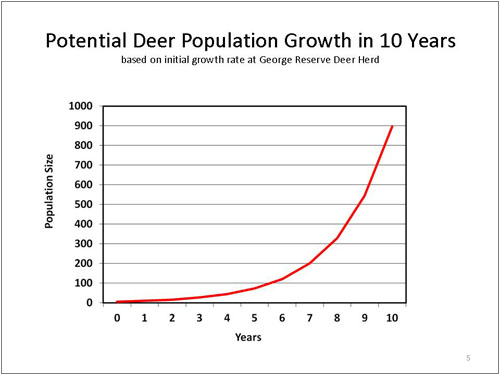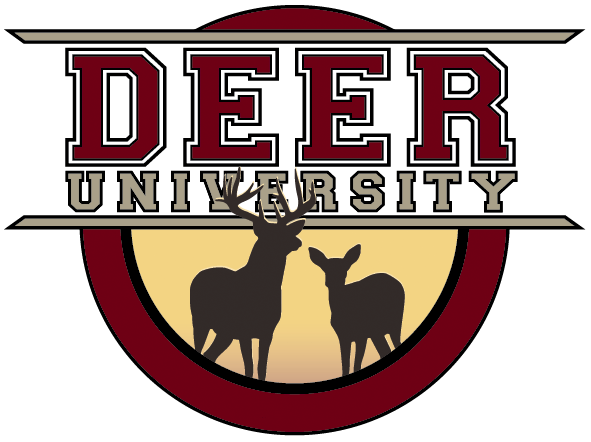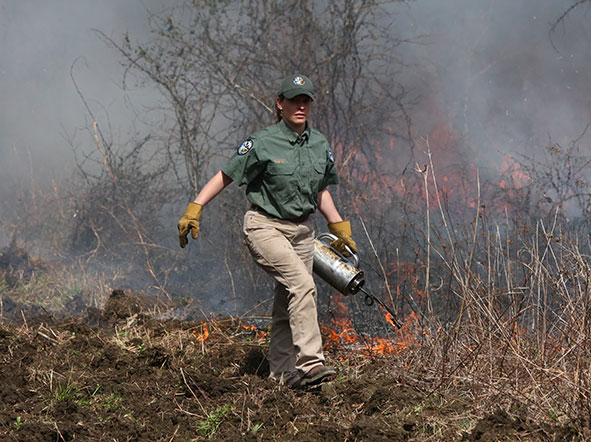Population Dynamics of Deer
Often hunters and natural resource managers want to know how many deer occupy a particular property or area. Sounds like a simple question, right? Unfortunately, determining the number of deer roaming the woods in your particular area can be downright difficult, and sometimes next to impossible. We often tell people that if they can figure out a technique to accurately and precisely determine deer population size in a wide variety of habitats and conditions they would win wildlife management's equivalent of the Nobel Prize! One of the biggest problems is that population size is always changing, hence the name population "dynamics."
Below we will review the basic concepts of deer population dynamics to give you a better understanding of how deer populations grow and the interaction of deer populations with their habitat.
Deer Population Dynamics
Deer population size and growth is composed of 4 characteristics: birth rate, mortality rate, immigration rate and emigration rate. Birth rate and mortality rate are simply how many deer are born each year and how many deer die each year; they are typically expressed as a rate (for example, 30 of 100 deer die in a year, or a 30% mortality rate). Immigration rate is the number of deer that were born some distance away and have relocated to your property. Yearling buck dispersal is a good example of immigration. The opposite of immigration is emigration, which is the number of deer that move away from your property.
Again, yearling buck dispersal is an example — on the average about 70% of yearling bucks will disperse from your property and live their lives on an adjacent property. Typically immigration and emigration will cancel out (many yearling bucks leave your property, but you gain a similar number of bucks that disperse onto your property), so many times these rates are the least important determinant of population size on your property. However, emigration can be an important factor in population size and a deer management plan when yearling buck harvest is much greater on surrounding properties. So if hunters on your property protect yearling bucks (as with all Quality or Trophy Deer Management Plans), but the surrounding properties regularly harvest yearling bucks, you may have a shortage of adult bucks and a sex ratio that is skewed towards does.
There could easily be about 10 different lines that represent changing characteristics of a population listed on this graph, but for our discussion we will focus on three aspects: population size, deer quality, and deer population production. The graph depicts how these population characteristics change as deer numbers increase from the starting point (as with a few deer that colonize a new area devoid of deer) to the saturation point, or what we call "carrying capacity."
We will review each one of these lines separately to discuss all the relationships that determine the shape of these lines.
Deer Population Growth
The most rigorous scientific study of white-tailed deer population growth occurred at a captive population called the George Reserve Deer Herd located in southeastern Michigan. The George Reserve is a 1,146 acre area enclosed with a deer-proof fence. No deer existed within the enclosure until 6 deer (2 bucks and 4 does) were introduced in 1928. Beyond everyone's expectations, the population grew to 222 deer in just 7 years! That's a deer density of 1 deer per 5 acres. The experiment was repeated in 1974 with 10 deer. This time the population grew to 212 deer in only 6 years. These experiments demonstrate the tremendous capacity for deer population growth when occupying good habitat.
Potential Deer Population Growth in 10 Years
If this growth rate remained constant until year 10, the population would number about 900, or 1 deer per 1.3 acres. This growth trend depicted on the graph is called exponential population growth, which means the population grows without limits. Despite a constant growth rate, the deer herd increases at greater amounts each year because more deer are reproducing, which is what caused the line to be curved instead of straight. To maintain this rate of growth, reproduction and survival must remain constant. In reality, it's impossible for the deer population to maintain this rate of growth. At some point there is not enough remaining food and deer begin to die of starvation and reproduction is halted. To avoid this eventual population crash, deer populations have a self-regulating mechanism called density-dependence.
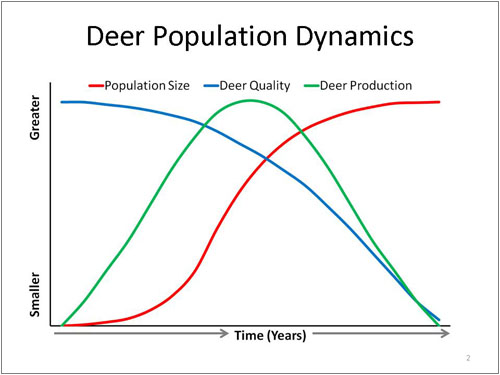
Deer Population Dynamics
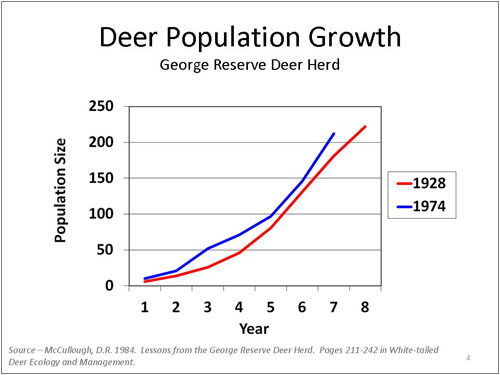
Deer Population Growth
